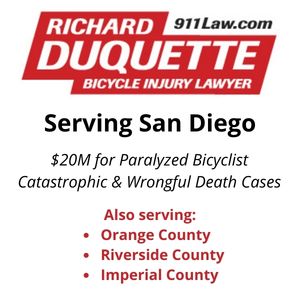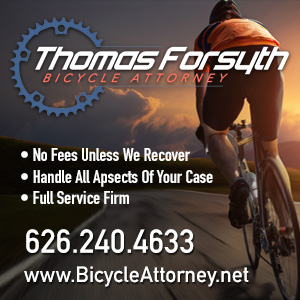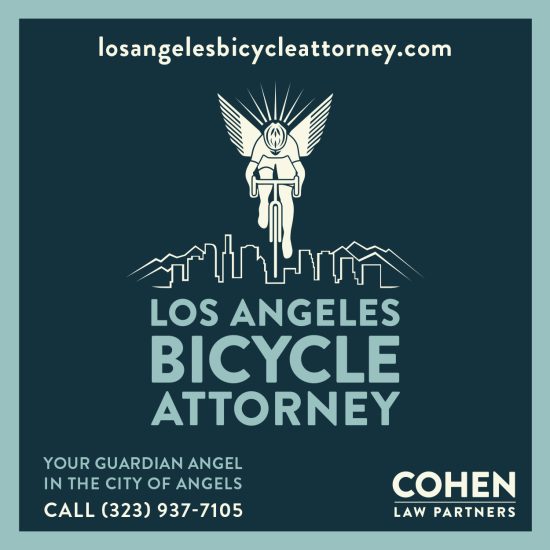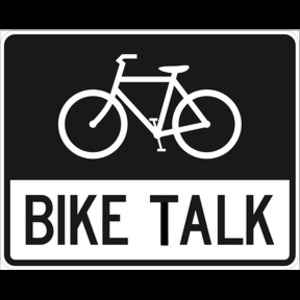
Day 230 of LA’s Vision Zero failure to end traffic deaths by 2025.
………
Of course he gets it.
Writing for the Los Angeles Times, Streets For All founder Michael Schneider says fourth-grader Nadir Gavarrete did not have to die in a Koreatown intersection earlier this month.
Nadir Gavarrete was riding an e-scooter along with his 19-year old brother when they were run down by a drunk driver, who was accused of blowing through a stop sign to make a left turn.
A stop sign, and an intersection, that shouldn’t have still been there.
Koreatown is one of the densest parts of Los Angeles — at 44,000 people per square mile, it’s more crowded than most New York City boroughs. Nearly every major street in Koreatown is on the city’s “high injury network” list — the 6% of streets that cause 70% of the traffic injuries and deaths. In other words, L.A. knows how dangerous Koreatown’s streets can be.
As a result, 14 years ago, in 2011, L.A. applied for a federal grant to improve safety along several city streets, specifically choosing to focus on the intersection of New Hampshire and 4th for one of its projects. The city won the grant money and kicked off community meetings to discuss installing a roundabout at the intersection, as well as adding enhanced crosswalks and other safety improvements to the immediate area.
Needless to say, a decade-and-a-half later, nothing has happened, this being Los Angeles and all.
Except for yet another needless death, added to a long and ever-growing list of failure.
What will it take for Los Angeles to have a sense of urgency in actually making our streets safer? We currently spend more on legal settlements to those hurt and killed on our streets than we do on Vision Zero, the city’s half-baked effort to reduce traffic deaths. Since Los Angeles declared itself a Vision Zero City in 2015, with the ultimate aim of having no one killed in car crashes on city streets by 2025, deaths and injuries have only gotten worse. In the last few years we’ve had at least three children hit and killed while walking to school. And yet the city’s leaders — facing a budget crisis, much of it of their own making — perpetually underfund LADOT and street safety in general.
Good question.
It’s worth taking a few minutes to read the whole thing.
Because the more things change in this city of fallen angels, the more they stay the same.
And that’s not a good thing.
………
Good news and bad news, as LADOT announced plans to remove peak-hour lanes on a number of low-traffic streets throughout the city in an effort to improve safety.
The lanes currently prohibit parking during morning and/or evening rush hours, too often turning them into high speed traffic lanes.
However, the bad news is, instead of converting the lanes to full-time bus or bike lanes, the city is restoring parking throughout the day. Which doesn’t actually improve safety for anyone, just trading one problem for another.
LADOT dangles the possibility of converting the lanes to some other, better use at some undisclosed future time. Although given the city’s financial problems — due in large part to those legal settlements referenced above — that day could be years, or even decades, off.
If ever.
LADOT Begins First Phase of Peak-Hour Lane Removal
LADOT has begun implementing the first phase of a citywide initiative to improve safety and access to street parking by removing peak-hour travel lanes and restoring full-time parking. This initiative, directed by the Los Angeles City Council, aims to enhance safety, improve access, and support the City’s long-term mobility goals.
Phase 1 of this initiative focuses on low-traffic corridors, restoring street parking on corridors where traffic volume is below determined thresholds. Future phases will examine higher-volume streets and may propose alternative uses for peak-hour lanes, such as dedicated bus lanes, protected bike lanes, or expanded pedestrian zones. LADOT will conduct outreach and collaborate with community stakeholders as future phases move forward, ensuring that proposed changes align with neighborhood needs.
In addition to providing greater parking availability to support surrounding businesses, these changes are expected to have minimal impact on congestion while improving street safety, with reduced speeding, fewer collisions, and improved visibility for people walking and biking.
The specific corridors selected for Phase 1 of peak-hour lane removal are:
- Alpine St, from N. Spring to Yale
- Alvarado St, Northbound, from James M. Wood to 7th
- Beverly Blvd, from Rampart to Witmer
- Broadway, Northbound, from 2nd to 1st
- College St, from New Depot to Alameda
- Crenshaw Blvd, from Florence to 59th St
- La Tijera Blvd, Northbound, from Thornburn to Knowlton
- Melrose Ave, from Vermont to Virgil
- Nordhoff St, Westbound, from Corbin to Canoga
- Pico Blvd, Westbound, from Overland to Sepulveda
- Ventura Blvd, Eastbound, from Farralone to Tampa
- Victory Blvd, from Lankershim to Clybourn
- Washington Blvd, from Vermont to Flower
- Washington Blvd, Eastbound, from Redondo to La Brea and from Wellington to Crenshaw
Thanks to Dr. Grace Peng for the heads-up.
………
A writer for Circling the News was the first to post a report from yesterday’s Culver City meets Venice CicLAvia.
And the first thing they noticed was the bad shape of the road around Venice and Abbot Kinney, saying it was easy to notice if you’re trying to dodge pavement problems.
The second thing seemed to be members of White People 4 Black Lives, several accident attorneys and the Venice High School Cheerleaders handing out free water along the route, the latter as they tried to raise funds.
And yes, it seems a good time was had by all.
Although I had to miss it because of my wife’s health problems, since she still hasn’t bounced back enough to go herself, or to be left at home alone.
Meanwhile, the Militant Angeleno’s guide to highlights along the route was posted too late to link to before the CicLAvia, but you can still check it out to see what you missed.
………
The war on cars may be a myth, but the war on bikes just keeps on going.
No bias here. A 55-year old Miami man claims he was arrested just for touching a police cruiser, as he tried to ride around the patrol car stopped in a bike lane; police claim he intentionally hit the car hard enough to dent it “four to five times.”
But sometimes, it’s the people on two wheels behaving badly.
A 12-year old Singapore girl was hospitalized after she was knocked cold by a 51-year old man on fixie while riding her bicycle; the older man was being investigated for a “rash act causing hurt.”
A Brisbane, Australia writer offers a carrot and stick solution to the problem of scofflaw bicyclists, saying the answer is more bike paths, while forcing bike riders to wear registration numbers.
………
Local
Two women were arrested for shooting another woman in the arm on Sepulveda Blvd in Culver City earlier this month, in an attempt to steal the victim’s ebike; a search of their apartment also turned up two assault rifles with high-capacity magazines, ammunition and a kilo of suspected cocaine.
State
Mark your calendar for September 4th, when the Orange County Transportation Authority will hold a webinar to discuss the OCTA Bikeways Connectivity Study to expand options for bikeways across Orange County.
A mom writing for the Times of San Diego explains how to select the right bicycle for your kids.
California Streetsblog reports on Bike Bakersfield and Calbike teaming up to “flip the script” on a “ludicrous” grand jury report decrying efforts to implement bicycle safety measures.
A local website reports bicycling and pedestrian deaths in Watsonville far outpace the average in Santa Cruz County, and considers four ways to make the city streets safer.
National
ABC News says the deadly 85th Percentile Rule that allows drivers to set speed limits with a heavy right foot could finally be on the way out.
Great idea. The White Line — the bicycle safety group founded by the parents of fallen Team USA cyclist Magnus White — put a group of Colorado lawmakers on a bus, and drove them around for a series of mobile town halls to show them the impact crashes have on vulnerable road users.
I want to be like her when I grow up. A Missoula, Montana woman calls a local octogenarian, peacemaker and bicycle evangelist her hero and mentor, the 87-year old woman is known throughout the community for riding around town in a bright vest, with her dog in her basket.
Chicago Streetsblog says yes, the city has a long way to go to become bike friendly, but People For Bikes’ use of it as a poster child for bicycling problems is just a joke.
New York’s Citi Bike bikeshare will now require users to prove they’re over 16 to use the service.
Florida — yes, Florida — is now the first state in the nation to offer ebike education as part of the regular curriculum, at least in some schools.
A 54-year old Miami man riding a bicycle on the city’s deadly Rickenbacker Causeway was killed when he was struck by two kids riding an electric dirt bike.
International
Momentum ranks the ten best European city’s for bicycling and the best time to visit, including four French cities, led by Paris.
An op-ed from a Calgary, Alberta bike advocate urges local drivers not to fear road diets, arguing that they can ease the city’s traffic woes.
An expat website explains how to get around the Netherlands by bike like a local.
Here’s another one for your bicycle bucket list, as Travel + Leisure recommends a 560-mile bike trail through France’s Loire Valley, exploring a unique blend of ancient Gaelic history, Renaissance châteaus, and ancient vineyards.
A 65-year old Tallahassee, Florida high school teacher and tennis coach stopped in Madrid, Spain, a little less than a quarter of the way on his attempt to become the oldest person a bike around the world.
Competitive Cycling
Remco Evenepoel will now be on the same team as Primož Roglič, as Roglič says he hopes they can do great things together, after the Belgian star signed with the Red Bull-Bora-Hansgrohe cycling team.
Finally…
Your next car could be a bike.
No, seriously, that’s all we’ve got this time.
………
Be safe, and stay healthy. And get vaccinated, already.
Oh, and fuck Putin.






















